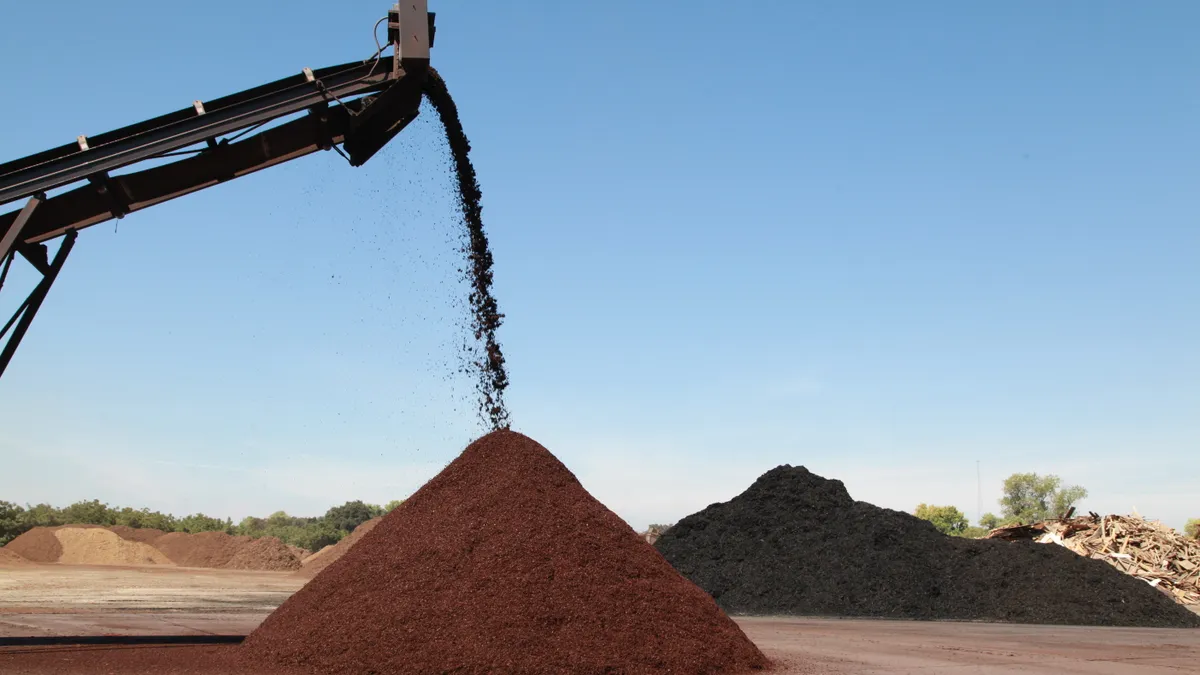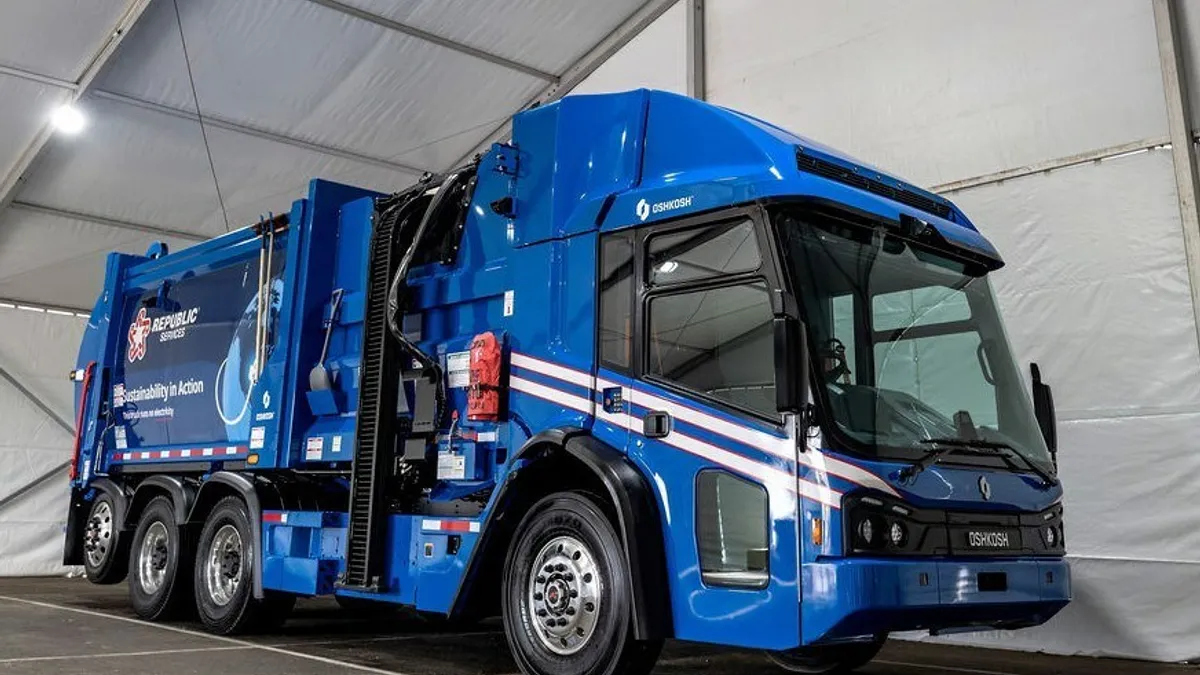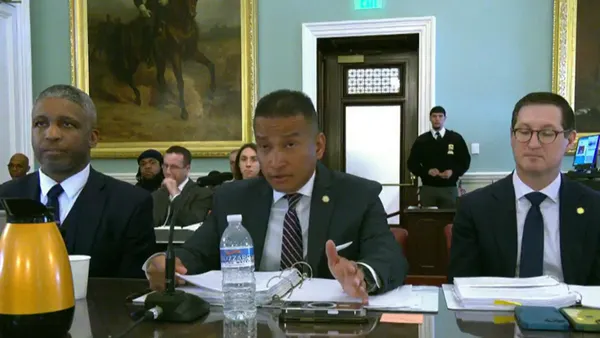After adapting to a tumultuous 2020, the composting sector is primed for ongoing expansion with multiple tailwinds from growing consumer demand, sustainability policies and more.
As outlined during its annual conference last week, U.S. Composting Council (USCC) priorities for the year ahead include pushing for more federal support around composting infrastructure, the creation of an industry-specific NAICS code, greater consideration of organics in municipal solid waste plans and an ongoing effort to strengthen member offerings.
These seven key themes – among many – stood out from speakers across multiple panels at the two-day virtual event, pointing to where the sector may be heading in 2021.
The pandemic has spurred new demand, complications
As more people spent time at home last year, yard work and gardening reportedly took on new levels of interest. Frank Franciosi, executive director of USCC, said a revived “Victory Garden” movement was a boon for the sector and demand is likely to continue.
“It looks like compost sales are going to be again through the roof, so hopefully everybody is stockpiling their inventories now. We expect to have another banner year,” said Franciosi.
Conversely, COVID-19 has also impacted the logistics of daily operations, research projects and preparations for upcoming regulations. This includes efforts to prepare for the Jan. 1, 2022, start date of California’s SB 1383 policy. Compost facility permitting consultant Matt Cotton estimates those implementation efforts could get set back approximately two years due to coronavirus disruptions.
At the same time, some projects have managed to continue during the pandemic. Jersey City, New Jersey, grew its organics drop-off program and is piloting a curbside program, according to Chief Innovation Officer Melissa Kozakiewicz.
New market opportunities are ripe for exploration
Conference speakers also highlighted a number of other ways to leverage new or existing outlets for finished compost.
Charles Duprey, founding president at consulting firm Naturcycle, highlighted ongoing potential to encourage the use of compost by state transportation agencies for roadway projects and soil amendments. USCC’s Seal of Testing Assurance Program is now used as an acceptance standard by 23 states, but many states continue to have their own preferences around feedstock and use cases.
In a more unique move, Arizona-based Tank's Green Stuff has found success creating custom blends for boutique shops and partnering with social media figures for promotion. Specialized products now account for an estimated 10% to 20% of the 50,000 yards of compost being sold each year and can yield a higher price.
“This is an exercise in both noticing marketing trends and also finding local influencers or YouTubers or people in your community,” said Shota Austin, compost operations manager, noting that a need for niche compost products exists in every community and can also have broader appeal. “The product just took off because it’s on social media. People are posting about it, people are seeing it all over the country.”
In Arizona and beyond, another niche market is working with hemp and cannabis growers. Jim Davis, vice president of business development at Atlas Organics, shared early results from a research partnership focused on hemp production in South Carolina. He described it as a model others could potentially explore in their own states.
Regardless of the local need, USCC’s newly elected board president said figuring out market factors is key to starting or maintaining any successful operation.
“Build your business around the end product and then you will be successful, the other side of it you can grow into,” said Brian Fleury, general manager of facilities at major composter WeCare Denali.
States and workplaces take steps to expand infrastructure
In Cotton’s view, one of the most important requisites for good composting infrastructure is strong and clear state legislation and regulations. California, New Jersey and Vermont are among the handful of states he said have taken noteworthy legislative steps to bolster food waste diversion. Even still, those states have areas for improvement.
California’s ambitious SB 1383 policy targets a 75% reduction in organic waste disposal by 2025. While Cotton believes California has good systems in place for yard waste, the state still has a lot of work to do on food waste. Some 50 to 100 new compost facilities are expected to be established as part of 1383 implementation, but Cotton noted the estimate relies on new collection programs being put into practice.
In New Jersey, starting in October, certain commercial establishments with high levels of food waste and within close enough range of a processing facility will be required to divert that material from disposal. But the requirement hinges on access to those facilities, just one challenge to operations in the state, said Jairo Gonzalez, president of the New Jersey Composting Council.
Meanwhile, a food scraps disposal ban took effect in Vermont in July and food donation has in turn increased, supporting a goal of “feeding people and not landfills,” said Natasha Duarte, director of the Composting Association of Vermont.
Addressing the issue of packaged food being sent to a landfill, Duarte also reported two depackaging facilities are being considered in the state by private companies. Additionally, the state has seen three new digesters open since 2018.
Infrastructure expansion is also happening at the workplace level, even through the pandemic. One example is at Northern California-based Sutter Health, which began a food waste diversion pilot in January 2020 at 10 of its 24 locations that extends through March of this year. So far, that program has saved 59,000 pounds of food waste, reported Jack Breezee, valley area director of regional food and nutrition services. The program will be extended to all remaining locations this year, and Sutter aims to be a model for healthcare systems across the U.S.
Community composters seeks greater voice in government decisions
According to advocates of community composting – locally based, closed loop set-ups feeding community gardens and farms – most barriers to growth remain under government control, and complying with regulations is a costly challenge to small-scale operators. Kourtnii Brown, a co-founder of the California Alliance for Community Composting, highlighted how different layers of regulation affect composters around the country.
That’s why having a voice in shaping those rules and regulations is important, speakers said. Brown encouraged other advocates to seek exemptions for small composters and tiered regulations for different sizes of operations, push for more incentives programs for composting, and even take the initiative to draft legislation. People involved in community composting “should be sticking their head in all of these windows.”
What might get lost in the shuffle, as the climate benefits of diversion and clean energy from food waste are discussed, is the regenerative value of compost within communities. People involved in community composting must have “the right seats at the right tables” at the federal, state, and local levels, said Ben Parry, CEO at Compost Crew, a food scrap collection business operating in the Washington, D.C. region.
On the larger municipality scale, communities may come to different conclusions on whether fully subsidizing a collection program makes sense for their goals. If the goal is to have maximum community participation, based on Parry’s experience at Compost Crew, price proves to be a “major factor" in participation. This means a fully subsidized curbside program may be the most successful approach.
Parry also said governments interested in building out their composting infrastructure ought to work with existing community composters and mission-driven local businesses, saying they have the infrastructure and the know-how in place to get started immediately. “We need to beat this drum hard.”
Contamination remains a challenge, but solutions are improving
As interest in organics recycling ramps up, numerous speakers said the key issue is figuring out how to keep the stream clean. One of the most cost-effective solutions mentioned was regular and specific education for customers, including generators and haulers.
“I really think it’s the cornerstone and most cost-effective way to really make an impact on contamination in our waste streams,” said Ted Dirkx, sales manager at equipment company Vermeer.
Potential approaches include stopping service for repeat offenders, or working on some type of certification program with rewards or penalties based on tip fee pricing. Speakers also talked about the need for more public education around how the process works, especially as younger sustainability-minded generations rise up.
At the Kansas City Chiefs football stadium, one lesson has been that training attendees to differentiate between different colored bins – as opposed to a previous approach with red Chiefs-branded bins across the board – really helps. “One of the first mistakes we made that we learned from was how important it is to have the correct color of the container … It’s hard to incentivize, sometimes, our fans to make the right decision,” said Vice President of Stadium Operations & Facilities Brandon Hamilton.
Even for all of these efforts, it was widely acknowledged that technology investments will be a necessary backstop.
“At some point in this industry we’re going to have to just figure out how to deal with it and get it out to hit different recycling goals,” said Gary Nihart, chief operating officer for Atlas Organics.
The consensus across multiple sessions was the more that can be done upfront the better, especially when it comes to plastics – such as utensils, films, packaging and more.
“You can’t get plastic out of compost once it’s gotten screened and it’s a half inch minus,” said Todd Dunderdale, senior area sales manager at Komptech, touting the potential benefits of shredding versus grinding as one example. “The more times we mechanically break down that material, the greater chance we’re going to have plastic in the finished compost."
Depending on a site’s feedstock, scale and budget, there were a number of technical solutions shared by speakers that could be a good fit. Depackaging systems came up repeatedly, as did vacuum equipment to capture film plastics, magnets for metals and other potential process or equipment changes.
While operational best practices are evergreen, technology is advancing
As more compost facilities spring up in regions around the country, panelists emphasized the need to not lose sight of operating efficiencies for longevity and sustainability.
This includes basic but essential concepts such as ongoing employee training, regular equipment maintenance and cordial community relations. If neighbors have odor complaints and aren’t on good terms, said Nanci Koerting, operations manager at Grant County Mulch, “they can bring you to a halt.”
As volumes potentially ramp up, panelists also emphasized the importance of an efficient setup that avoids handling material multiple times, as well as ensuring certain stages of the process aren’t taking up too much real estate.
“We’re not dealing with huge margins,” said Nihart. “Any little mistake can eat up all the margin on your product."
In addition to assessing the most efficient watering methods, both in terms of equipment and strategy for certain climates, speakers previewed the growing use of more advanced technology. Fleury said Denali is now using drones at all outdoor sites to help measure volumes and other metrics, noting this data can be useful for engaging with regulators. Others have researched potential uses for robotics.
“I think there’s a lot of excitement about taking the MRF equipment into our industry,” said Scott Gamble, organics specialist at Waste Management, with the caveat this application could be challenging because of the wetter feedstock.
Composting has a key role to play in climate change mitigation
While discussions around compost’s climate implications largely focus on its role as a solution, the conference also touched on the potential to reduce the sector's own emissions.
Denali has begun developing a greenhouse gas inventory across all operations. The company is also taking climate change into consideration when it comes to thinking about power usage, water usage, working conditions and other factors.
“High emissions can tend to correlate with inefficient operations,” said William Brower, project manager, explaining how pockets of methane can be a sign more aeration is needed. “If you’re composting well you’re going to have lower emissions.”
Examples of where Denali is reducing its footprint include switching away from propane heating, looking at equipment efficiencies and procuring renewable energy. Brower was clear that data shows composting is more preferable to landfill disposal, even with gas capture, from an emissions standpoint.
Compost's other climate benefit, which is still in the earlier stages of understanding, is its role in soil health.
“Compost is a climate solution because it helps sequester carbon in the soil,” said Rebecca Ryals, professor at the University of California, Merced. “There’s a really emerging interest in how we can better manage our soils, particularly for carbon storage.”
Ryals highlighted how ongoing state and federal policy evolution is beginning to recognize these benefits, including through funding for farmers utilizing compost. She is working on a research project assessing compost usage on slopes at property owned by StopWaste, a waste management agency in Alameda County, California, and has seen initially promising results.
Recology has been involved in related efforts, via the California Department of Food and Agriculture’s Healthy Soils Program that provides funding to farmers for compost usage. The company has now partnered with farms on 10 projects, supplying 6,500 tons of compost between 2018 and 2020. Erin Levine, an account manager with the company, said initial data is “all looking very promising” with farmers reporting anecdotal changes such as lusher grass and lower calf mortality rates.
These themes of compost’s positive benefits were a frequent topic throughout the event, though one of its keynote speakers made clear there is more work to be done on conveying that message when it comes to climate and other areas.
“The value of compost is not avoided methane. The value of compost is in the regeneration of the soil. I’m not saying methane avoidance isn’t a great thing – of course it is. But that’s not where the value lies," said “Drawdown” author and environmentalist Paul Hawken. "The ultimate value is actually in regenerating life on Earth. All life comes from soil."























